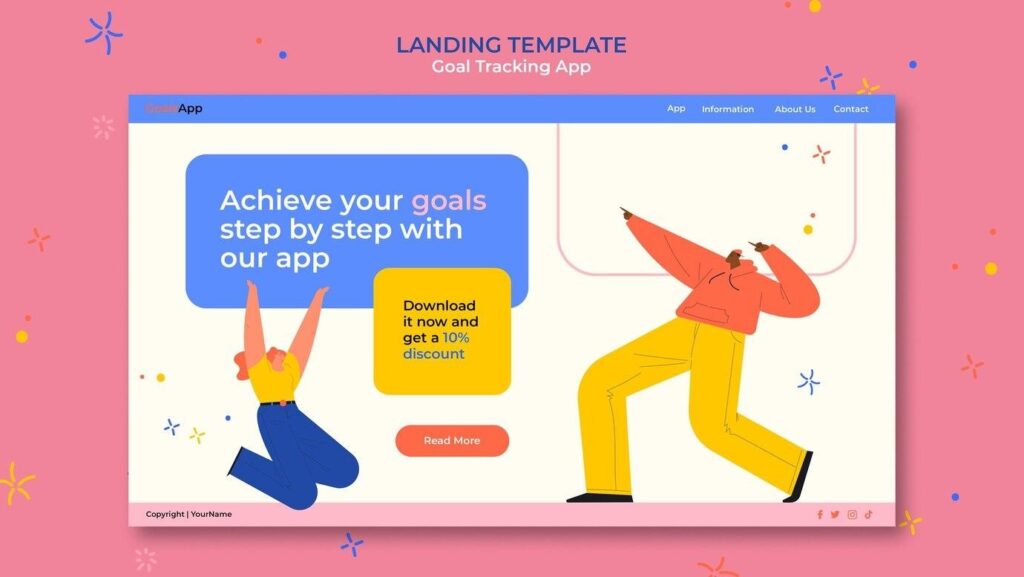How To Get My Site To Show Up On Google

How Google Finds Your Website
Understanding how Google finds and handles your website is important in increasing its visibility in search results. Google uses sophisticated algorithms and search engine technology techniques to discover and index homepages.
Content Strategies for Better Ranking
To improve search engine rankings, search engines often rely on compelling content strategies, with keyword research being essential. By creating unique and valuable content, optimizing it for specific target keywords, and adding multimedia elements, experts ensure the quality of both internal and external links. They regularly update content and adapt it to algorithm requirements to attract the target audience, especially when a new site is launched or created.
Creating High-Quality, Engaging Content
Developing unique, high-quality, and engaging content is a key step toward business success in digital marketing. Experts focus on creating interesting and useful material for your audience, using clear language, eye-catching images, and compelling headlines. They update content regularly, add interactive elements, and take user feedback into account to increase engagement.
Using Keywords Effectively in Content
This well-known service is truly the foundation of all optimization efforts. Therefore, specialists seamlessly integrate phrases and keywords into headings, text, and meta descriptions, avoiding keyword stuffing. They also analyze your audience’s search queries and choose relevant expressions, quotes, and phrases. Experts diversify these terms with synonyms to improve readability and enhance the chances of achieving high positions in search results.
Updating Existing Content for Freshness
From time to time, every business website needs updates. This service helps maintain the relevance of content and improve online search positions. Experts regularly review and update old material, adding new information, up-to-date data, and relevant quotes and phrases. This boosts optimization efforts and increases the value of content for the audience, keeping their interest alive.
Crawling
This is the process used by Google as it systematically traverses the web, looking for content it can find and update. The bots maintain an initial Internet list of known URLs and then collect links from pages they visit to produce further visits. Googlebot tries to extract links to other pages from those who downloaded this new page. They can scan anywhere on your web server; such scans include digital signatures and content keywords:
- Sitemap: Making a sitemap for your website lets Google know how pages are laid out and which are most important.
- robots.txt: This file tells Googlebot what to crawl.
- Internal Links: A well-structured internal linking strategy will help Googlebot navigate your site more easily.
- Site Speed: Pages that load quickly make it possible for Googlebot to download more pages.
Indexing
After Google has successfully crawled your website, the next step is to index the pages. Google uses segmentation technology. It divides your content into many small sections for easier management and reading. The engine scans text, images, and videos explained in your content source file. Finally, it stores this information in its huge databases for retrieval whenever a visitor sends a user question as part of an Internet search. Factors affecting whether a page will be indexed include:
- Content Quality: Pages of high quality or relevance have more chance to be indexed and will position better
- Structured Data: Implementing structured data (a markup developed by Google) helps Google read the content and meaning of your pages better.
- Meta Tags: Pretty titles, good meta titles, and meta descriptions can aid.
- Canonical Tags: These tags help Google avoid duplication problems if we use one page or version per piece of information by showing which duplicate pages you want to have indexed.
Ranking on Google Search
After Google crawls and indexes your web pages, a sophisticated algorithm determines their position in the engine results pages. This process of “position” considers over 100 different factors, which include:
- Keywords: The frequency of relevant keywords in your content, the natural distribution of these search terms, and the selection of appropriate related keyword phrases.
- Backlinks: The quality and quantity of links directing to your pages without spam and their comparison with competitors in your industry.
- User Experience: Factors such as page load speed, mobile-friendliness, how users perceive the website, and utilization of webmaster tools.
- Content Freshness: Updating content regularly has a positive impact on your position in Google’s positions.
Factors Affecting Your Website’s Position
Several factors affect how prominently you appear in search results when relevant queries are made:
Age of the Domain
The age of a domain can influence its ranking. Older domains typically convey credibility and reliability, leading to higher rankings. However, newer sites can also rank well with effective search search platform optimization during development.
Content Quality and Relevance
High-quality and relevant content that addresses user queries or fulfills their needs earns higher positions. Google favors websites that provide value to searchers.
Website Design and Structure
Google facilitates an aesthetically pleasing and well-structured website design that enhances user experience. Platforms like WordPress can simplify this process.
Technical Aspects (Mobile-Friendliness, Speed)
Mobile-friendliness, page loading speed, and secure connections are crucial technical elements for achieving high positions on Google. Websites offering seamless experiences across devices are preferred.
Backlinks and External Authority
The quality and quantity of backlinks from reputable sites significantly impact the relevance and authority of your website. Quality backlinks can boost positions and enhance Google’s trust in your site.

Timeline for New Website Visibility
Depending on several factors, it can be difficult for a new website to appear on Google. Knowing what factors affect this will help speed up the process and give a realistic time frame.
Factors Affecting Indexing and Visibility
Factors affecting visibility content quality — Google will prioritize a website with high-quality, valuable content because it is more likely to show up on the first page of Google’s search query. Backlinks are the number and quality of websites linking back to your website, significantly impacting how much visibility your website generates. Suppose you have backlinks from reputable and authorized websites. In that case, most users will likely improve the traffic to your website synchronization algorithms of the most popular online system trust such links. Technical setups include a secret structured Sitemap, robots.txt sensitive to the Google bots, and mobile responsive and web design. Updates Frequency — regular updates of the later information make Google Bots check your website more often.
Typical Timeframes for Seeing Results
Usually, it takes three to six months for a new web resource to appear in the results. However, different factors may mean the exact timetable varies in practice.
First Crawl: This means that in the first few days to weeks, after your site goes live, Google Bots may find your web resource.
After the first crawl, in two weeks, it may still be a few more weeks before Google finishes your web resource. This is when Google checks your content, structure, and backlinks.
Ranking: Now your site is showing up in results. However, getting to those higher positions could take longer, depending on how competitive your key phrases are and the quality of your SEO efforts.
Strategies to Improve Search Engine Visibility
Here are methods you can use to make your web platform visible in the results of search engines.
Quality Content: Delivering information correctly also counts, so ensure you have high-quality content for your product or service that is bent toward your readers. Update frequently to keep the material always up-to-date and captivating.
Technical Optimization: Ensure that your pages are well-optimized technically. This includes making them mobile-friendly and responsive to look good on any screen or device. Another part of the job is sitemaps.txt (robots. txt ), which gives search platforms clear instructions about what parts of a site to follow — or not to follow.
Backlink Building: Create a network and eat into the backlink profile. When combined with high-quality links from authoritative web resources according to your website’s topic, this can result in tremendous credibility for site trust as well.
On-Page SEO: It is important to carefully select the proper key phrases for every page on a web platform and provide them with optimized copy that fits around these words. This also happens to include hiring professional writers.

Google Online Search Console: Besides having the tool running, don’t forget that you’ll want to include your Search Console URL and get something up in Google’s tool service for it so your site can be properly. You should then be able to watch its performance (and solve any trouble if something goes off within an organic update) and submit a sitemap–that makes things much more accurate!
Boost Your Website’s Search Presence
Elevating Google’s online search presence for your website or pages demands a fusion of strategic SEO methods, technical optimization, and ongoing performance supervision. We have some suggestions that may help your site stand out from the rest.
SEO Strategies for Higher Ranking
A combined force of on-site SEO strategy, picking up key phrases and putting them into good effect, and building quality links dramatically improve your website’s exposure and increase organic traffic.
Implement On-Page SEO
To improve its presence on Google, your web platform must blend a strategic SEO approach with technical optimization. The above may help your site become a cut above by carefully monitoring performance.
Use headings (H1, H2, H3) to guide users and Google, arranging content clearly and logically. High-quality content, such as detailed and interesting entries answering the questions or needs of the user, should be published for mass consumption.
Internal links: Let the visitors to your pages know that you value this web platform by providing them with a better and more enjoyable user experience through related content on your site.
Build Backlinks for Increased Authority
Build backlinks for authority increaseBacklinks are links from one website to another and are critical for your site’s authority and Google position. Here are some creative ways to build backlinks:
Content marketing: Create shareable, high-quality content such as blog posts, infographics, and videos likely to be linked by people.
Guest blogging: Write articles for reputable blogs within your industry and include the mandatory link to your web platform.
Outreach: Use channels such as LinkedIn or email to contact industry influencers, prominent bloggers, and webmasters suggesting your idea for a collaboration or some relevant material – perhaps ones that will earn you a backlink.
Social media: Sharing web content on social media increases its chances of being seen and attracting backlinks.
Local SEO (For Local Businesses)
Local SEO In particular, the web resources of smaller businesses can get a lot out of using local SEO. How can you then make your web platform geared towards local searches?
Google My Business: Arrange your site’s listing to feature details that best reflect your business. Make sure this is accurate and important info.
Local Keywords: Use local key phrases in the content and meta tags–for instance, if a bakery owner is located in New York, she should use phrases such as “New York bakery” or “best bakery in NYC.”
Local Backlinks: Get other web resources to link to you whenever possible. Web resources located within the same geographic area are beneficial for this. Directories and local businesses also contribute to linking back.
Customer Reviews: Ask satisfied customers to visit your Google profile and other review sites to give you a good review.
Monitor Performance and Improve User Experience
Before one can continue improving a website’s rank within Google’s results, one must always monitor how the site is performing and what types of users are experiencing the user interface.
Google Search Console: Use this search console to check your site’s performance, see what issues you may need to resolve, and get an idea of how well Google views your site. Easily repair any errors or problems as soon as they crop up.
Analytics: Tools such as Google Analytics will show you what your visitors are doing on your site and where they are coming from. Such data is beneficial for discovering what is working and what needs improvement.
User Experience (UX): Provide an outstanding user experience. Make sure that your web platform is easy to navigate and visually attractive while producing rewarding content simultaneously. As for mobile friendliness, page load time, and more, all these matters need attention.
Feedback: Collect and analyze what users are telling you. This is where changes need to be made to improve the overall user experience and eliminate friction points.
FAQ
Why Isn’t My Website on Google?
Maybe your website does not appear on Google owing to a swish page that has not been indexed. The web platform may have insufficient content and backlinks or could even question its quality.
How Often Does Google Crawl Websites?
The speed at which the most popular online system crawls websites depends on how popular the site is, the higher the frequency of your updates combined with its quality.
How Do I Make My Website Visible on Google Search?
To get your website on Google results shown in Google Search engine listings, you must choose the right settings for its accessibility. You must integrate high-quality, supplementary content and have ultimately attractively designed link opportunities that link to other sites.
How Do I Get My Website to Show Up on Top of Google Search?
A systematic search engine optimization plan must be prepared to appear at the top of Google’s various online search results list. Compose high-quality content, adjust your web platform structure, and ultimately, the domain value of your backlinks.
The result is that getting your website into Google requires not only reconciliation on its popularity, depth of content, and incoming links with what is allowed by Google but also a correct understanding of the above things.
Adopt effective SEO strategies. While beginning from scratch or trying to climb up the positions against stiff competition, you may increase the visibility and number of visitors to your site with some patience.





